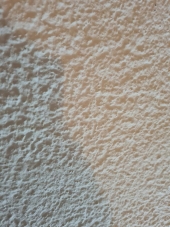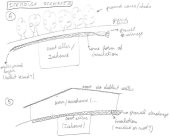
 6
6








If there is one thing the Wizard of Oz has taught me, it is not to trust school teachers on bicycles.
 1
1




John Daley Bendigo, Australia The Enemy of progress is the hope of a perfect plan
Benefits of rainfall collection https://permies.com/t/88043/benefits-rainfall-collection
GOOD DEBT/ BAD DEBT https://permies.com/t/179218/mortgages-good-debt-bad-debt

 1
1




Nina Simine wrote:My partner and I have been deeply interested in natural building since the early 2000s.
We are now middle age and have a farm with zero building restrictions and some funds to perhaps realize our dream.
The issue is that we can’t quite seem to settle on what kind would work best in our area so we can dive into re learning everything.
We are in the south East USA.
It is 80-105 with above average humidity for about 4–5 months of the year.
Then we have highs on 30-70 F and lows of 10-45f another four months of the year.
In between each extreme we have about two o this of open windows, low humidity and happiness.
Our soils on the farm are sandy with some clay and granite deposits. We do have plenty of timber for potential cordwood, but it is mostly pine, sweet gum, mountain maple and swamp oak— all are less than recommended for that.
We always gravitated to con, and have no issue with large overhanging porches, but are concerned with both the speed that it needs to go up and our soil perhaps not being good for that.
We want to build as natural as possible and will be planning for air conditions and wood stove heat.
- Tim's Homestead Journal - Purchase a copy of Building a Better World in Your Backyard - Purchase 6 Decks of Permaculture Cards -
- Purchase 12x Decks of Permaculture Cards - Purchase a copy of the SKIP Book - Purchase 12x copies of Building a Better World in your Backyard
 4
4




"When the whole world is running towards a cliff, he who is running in the opposite direction appears to have lost his mind." C.S. Lewis
Visit https://themaineingredient.com for organic, premium dried culinary herbs that are grown, processed, and packaged in the USA.
 4
4




My suburban building and homesteading blog https://offgridburbia.com/




John Daley Bendigo, Australia The Enemy of progress is the hope of a perfect plan
Benefits of rainfall collection https://permies.com/t/88043/benefits-rainfall-collection
GOOD DEBT/ BAD DEBT https://permies.com/t/179218/mortgages-good-debt-bad-debt
 1
1




John C Daley wrote:Good idea Aaron, will the humidity and heat cause any issues?
My suburban building and homesteading blog https://offgridburbia.com/

|
Seriously Rick? Seriously? You might as well just read this tiny ad:
Homestead Pigs Course
https://permies.com/wiki/365748/Homestead-Pigs
|




